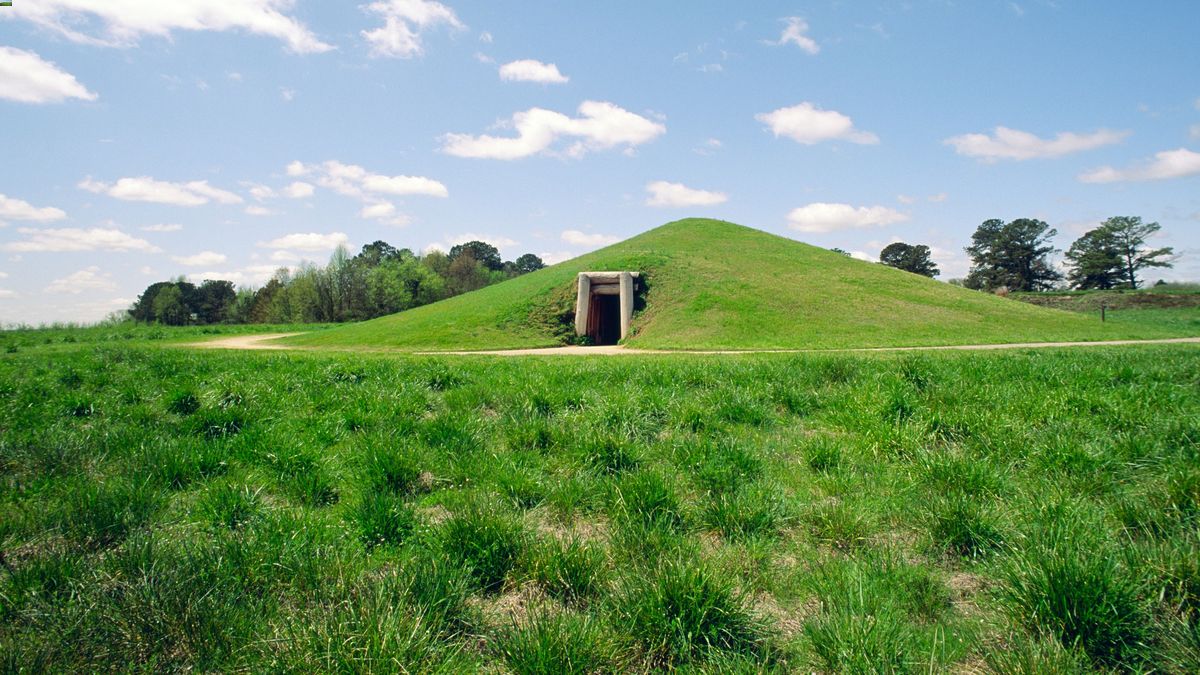Secrets Of Georgia’s Ancient Mounds

Have you ever wondered about the ancient mounds in Georgia? These mysterious earthworks, built by Native American cultures, hold secrets of civilizations long past. From the Etowah Indian Mounds to the Kolomoki Mounds, each site offers a glimpse into the lives of those who lived centuries ago. Imagine walking through history, where every mound tells a story of rituals, community, and daily life. Whether you're a history buff or just curious, visiting these mounds can be a fascinating journey into the past. Ready to learn more about these incredible sites? Let's dive into the history and significance of Georgia's ancient mounds.
Discovering Georgia's Ancient Mounds
Georgia's ancient mounds hold secrets of civilizations long gone. These mounds, built by Native American cultures, offer a glimpse into their lives, beliefs, and traditions. Let's explore some of the most fascinating mounds in Georgia.
Etowah Indian Mounds
The Etowah Indian Mounds, located near Cartersville, are among the most significant archaeological sites in the southeastern United States. These mounds were built by the Mississippian culture between 1000 and 1550 AD.
- Great Temple Mound: The largest mound at Etowah, standing at 63 feet tall, served as a platform for the chief's residence and important ceremonies.
- Funerary Mound: This mound contains the remains of high-status individuals, along with elaborate grave goods like copper ornaments and shell beads.
- Village Area: Surrounding the mounds, the village area provides insight into the daily lives of the Mississippian people, with reconstructed houses and artifacts on display.
Ocmulgee Mounds National Historical Park
Located in Macon, the Ocmulgee Mounds National Historical Park preserves the history of Native American cultures dating back over 12,000 years. The park features several impressive mounds and other archaeological sites.
- Great Temple Mound: This mound, rising 55 feet, was used for religious ceremonies and as a platform for important structures.
- Earth Lodge: A reconstructed ceremonial earth lodge with a preserved original floor, offering a unique glimpse into the spiritual life of the Mississippian people.
- Funeral Mound: This mound contains burials and artifacts that provide valuable information about the social structure and customs of the ancient inhabitants.
Kolomoki Mounds State Park
Kolomoki Mounds State Park, located in southwest Georgia, is home to one of the largest and oldest mound complexes in the state. The mounds were built by the Swift Creek and Weeden Island cultures between 350 and 750 AD.
- Temple Mound: The largest mound at Kolomoki, standing at 57 feet tall, served as a ceremonial center and a platform for important structures.
- Mound A: This mound, used for burials, contains numerous artifacts, including pottery, tools, and ornaments, providing insight into the daily lives and beliefs of the ancient inhabitants.
- Mound D: A smaller mound used for ceremonial purposes, offering a glimpse into the religious practices of the Swift Creek and Weeden Island cultures.
Rock Eagle Effigy Mound
The Rock Eagle Effigy Mound, located near Eatonton, is a unique and mysterious site. Unlike the other mounds in Georgia, this one is shaped like a giant bird, constructed from thousands of white quartz rocks.
- Effigy Mound: The mound, measuring 102 feet from wingtip to wingtip, is believed to have been built by the Woodland culture between 1000 BC and 1000 AD. Its purpose remains a mystery, but it may have served as a ceremonial or burial site.
- Observation Tower: Climb the observation tower for a bird's-eye view of the effigy mound and the surrounding landscape, offering a unique perspective on this ancient site.
Fort Mountain State Park
Fort Mountain State Park, located in the North Georgia mountains, is home to a mysterious stone wall and several ancient mounds. The origins and purpose of these structures remain a topic of debate among archaeologists.
- Stone Wall: The 855-foot-long stone wall, built atop Fort Mountain, is believed to date back to the Woodland period. Its purpose is unclear, but it may have served as a fortification or ceremonial structure.
- Mound A: This small mound, located near the stone wall, contains artifacts and remains that provide clues about the ancient inhabitants of the area.
- Mound B: Another small mound, offering additional insights into the lives and customs of the people who built these mysterious structures.
Discovering Georgia's Ancient Mounds
Georgia's ancient mounds offer a glimpse into the past. These structures, built by Native American cultures, hold stories of rituals, daily life, and community. Visiting these mounds, like the Etowah Indian Mounds or the Ocmulgee Mounds, provides a unique experience. You can walk where ancient civilizations once thrived.
Exploring these sites isn't just about history. It's about connecting with the land and understanding the people who lived here long before us. The mounds stand as a testament to their ingenuity and resilience.
Whether you're a history buff or just curious, Georgia's ancient mounds are worth the trip. They remind us of the rich heritage that shapes our present. So next time you're in Georgia, take a detour to visit these incredible sites. You'll leave with a deeper appreciation for the past and its impact on today.

